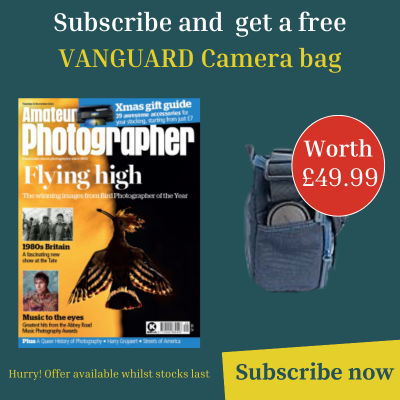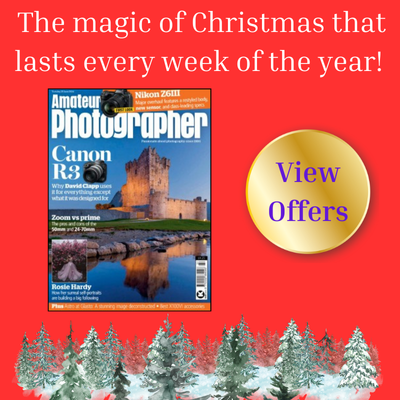Nikon has confirmed the upcoming launch of the D800, a 36.3-million-pixel DSLR aimed at high-end enthusiasts and commercial photographers that borrows many of its features from the flagship D4.
[NEWS UPDATE: Nikon UK has this morning told Amateur Photographer that, like the D700, the D800 will be made in Japan – in line with other Nikon high-end DSLRs. See end of article.]
Priced around £2,400 – and expected in UK shops on 22 March – the FX-format (full-frame) D800 uses the D4?s 91,000 pixel RGB metering sensor, Expeed 3 image processor and MultiCAM 3500FX AF system.
The AF system deploys 51 AF points (15 cross hair points in the centre) and is claimed to deliver low-light shooting down to -2EV (?moonlight? level).
Also like the D4 – which was unveiled last month – selection of the AF and AF-area modes is designed to be possible without the photographer taking their eye off the viewfinder.
Claimed to be 10% lighter than the D700 ? which continues in the range – the D800 is housed in a magnesium-alloy body said to be on a par with its three-and-a-half-year-old sibling in terms of its resistance against moisture and dust.

Nikon has also today unveiled a variant of the D800, aimed squarely at the medium-format-market.
The D800E dispenses with the imaging sensor?s anti-aliasing filter, a modification that results in a ?higher, more detailed resolving camera?, explains Nikon.
Nikon concedes that use of an altered low-pass filter risks ?false colour and moire? in photos.
But it expects photographers to counteract these effects by using widely available imaging software, including Nikon?s optional Capture NX 2.
The D800E is due on sale in April, priced £2,689.99.
?We are expanding into new markets,? said James Banfield, Nikon UK’s group support and training manager, adding that the camera?s market is expected to include studio photographers as well as those shooting reportage.
?It is groundbreaking the level of detail that is able to captured in a camera of this size,? he claimed.
Asked if the D800 poses a threat to sales of Nikon?s pro-spec D3x Banfield said: ?There will still be a market for it though the [D800] will undoubtedly replace that market.?
The D800, which uses the same battery as the D7000, features a top equivalent ISO of 25,600 and minimum of ISO 50.
The firm added: ?The camera?s intelligent noise reductions systems manage noise without sacrificing fine details??
Banfield said that the new FX CMOS sensor (35.9x24mm) uses Nikon?s ?gapless technology? to ensure as much light as possible reaches the sensor.
By incorporating ?broadcast quality? Full HD (1920x1080p) video – also on the D4 – Nikon hopes to grab a previously untapped market – embracing videographers and photographers who also shoot movie footage.
The D800 can record 29 minutes and 59 seconds of video in one take , according to Nikon (the battery lasts for one hour using live video) and includes a headphone out port, allowing sound to be monitored.
In an interview with AP, Banfield acknowledged that Nikon would seek to introduce an ISO as low as ’25’ in future cameras, if customers demanded it, but added that this is not something people have requested, so far.
On board firepower includes a dual-axis electronic, virtual, horizon – viewable on the LCD or via the viewfinder – and a 3.2in (921,000-dot resolution) monitor with auto brightness control.
The D800 is designed to shoot at a burst rate of up to four frames or second, or 6fp using the DX crop mode (for 15.4MP resolution images)
The USB 3.0-compatible model accepts both SD and CF cards using a dual card slot (compatible with SDXC and UHS-1 for SD and UDMA 7 for CF).
The D800 incorporates an optical viewfinder, offering around 100% frame coverage and 0.7x magnification.
Nikon says it has improved the shooting mode dial?s ?visibility?, using a four-button layout.
There are also dedicated buttons for ISO, white balance and image quality.
?A new bracketing button has been strategically placed to aid such features as HDR,? said the firm in a statement.
Picture Controls, which allow the photographer to fine tune characteristics such as sharpness and hue, can be accessed via a new dedicated button.
Mirroring the D4, the D800 offers three image area options in addition to full-frame: 5:4 (30.2MP), 1.2x (25.1MP), and DX-format (15.4MP).
To coincide with the launch Nikon is set to release a new battery pack called the MB-D12, priced £379.99.
Nikon claims that the new shutter unit has been tested to more than 200,000 cycles and that the battery can shoot around 850 still image on a single charge.
Nikon UK?s group marketing manager Jeremy Gilbert made clear to AP that the firm wants to encourage customers to order the D800E – and the D4 – through ?selected? dealers.
Online ordering will be possible, according to Nikon.
Gilbert said Nikon wants to make sure customers buy the cameras from dealers offering adequate stock, the full line-up of compatible accessories and best possible customer service.
Nikon plans to publish a full list of dealers on its website shortly, promising a ?good spread nationally?, but insists there will not be an availability problem.
Nikon believes that ordering in this way will also give the chance for ?trained staff? to explain the benefits of the D800E, over the D800, to photographers.
Nikon UK has said that the D800 will be made at its Sendai factory.
Last year Nikon was forced to shut down its production facilities in northern Japan following the earthquake and tsunami disaster.
Nikon’s plant at Sendai is famed for producing other pro-spec DSLRs, such as the D700.












